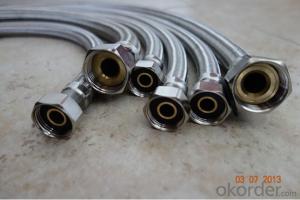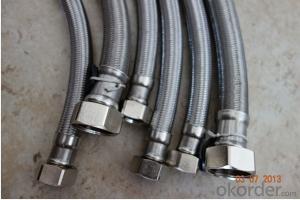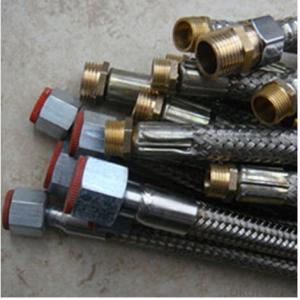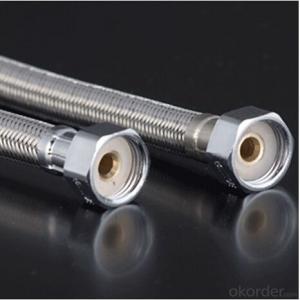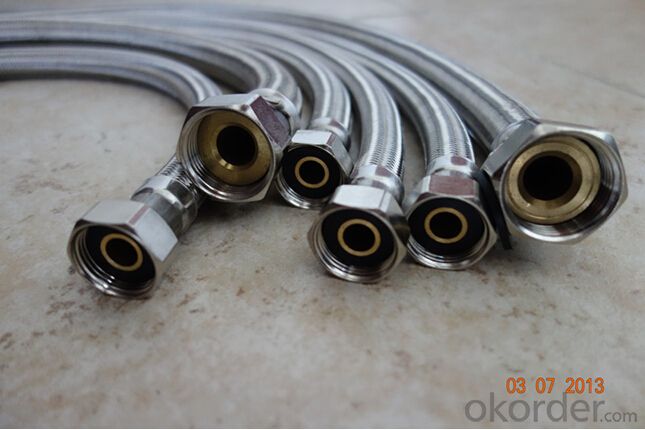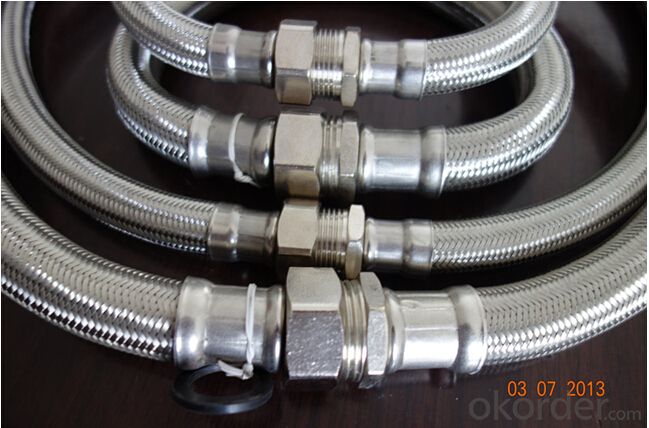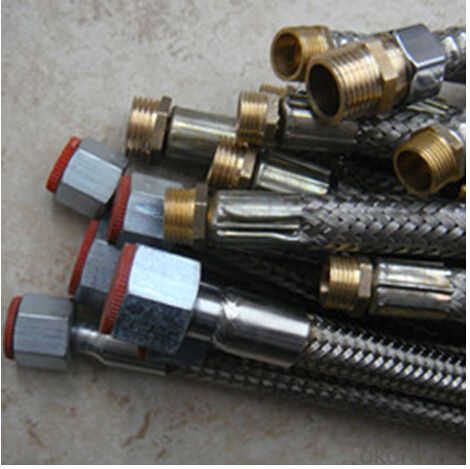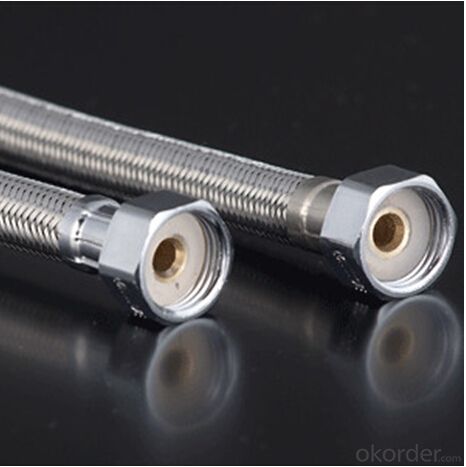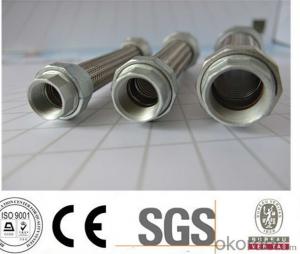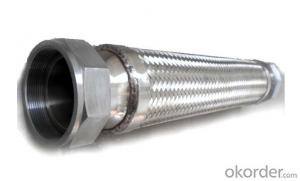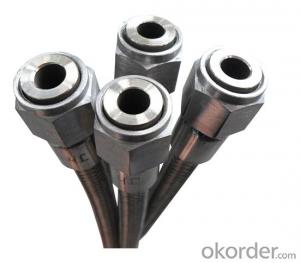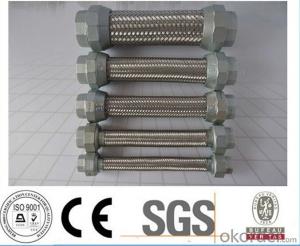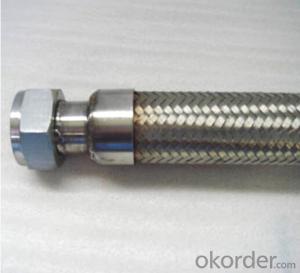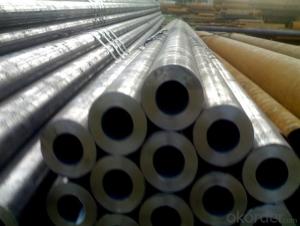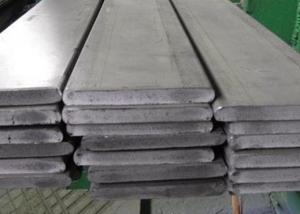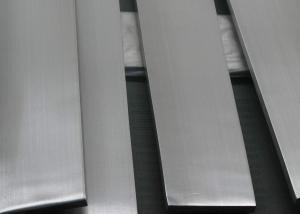Stainless Steel Braid Hose with 1/3'' Fittings
- Loading Port:
- Tianjin
- Payment Terms:
- TT OR LC
- Min Order Qty:
- 1000 pc
- Supply Capability:
- 100000 pc/month
OKorder Service Pledge
OKorder Financial Service
You Might Also Like
Specification
Stainless Steel Braid Hose with 1/3'' Fittings
Applications of Stainless Steel Braid Hose with 1/3'' Fittings:
--Refueling system
--Chemical and pharmaceutical industry
--Industrial hydraulic systems
--Air conditioners in industrial and construction –site vehicles
--Food and beverage industry
--Special and standard industrial applications
--Water and cleaning management
Features of Stainless Steel Braid Hose with 1/3'' Fittings:
1. )O. D.: 13-18MM 0.2-3M long
2. )Nut.: Nickel/Chrome Plated Brass (Zinc / Iron / Aluminum is available)
3. )Size Of Nut.: Female&Male 1/2''; 3/4''; 3/8''; 7/8''; 5/16'', and M10...
4. )Insert.: Brass (Zinc / Aluminum / Plastic is available)
5. )Inner tube.: Rubber/ EPDM/PVC
6. )Covered Material: Stainless Steel 201, 301, 304 /Aluminium Wire
7. )Working Pressure: 5Kg-15Kg
8. )Temperature: 0-92° C
9. )Quality Assurance: 3 years
RemarkAPPLICATION: HOUSEEHOLD WARE, BATHROOM WARE, SHOWER HOSE
PAYMENT: T/T, L/C
DELIVERY TIME: 20DAYS OR 30DAYS AFTER RECEIVED 30% DEPOSITS
MOQ: 5000PCS
ODM&OEM IS ACCEPTABLE
PackageInner: PP bag /Blister packing Outer: Carton box
Specifications of Stainless Steel Braid Hose with 1/3'' Fittings:
NO | I.D | Refer to O.D | Working pressure | Burst pressure | approximate Weight | |||||
(inch) | (mm) | (inch) | (mm) | MPa | Psi | MPa | Psi | kg/m | lbs/ft | |
1 | 1/8 | 3.2±0.2 | 0.35 | 9±0.3 | 2.06 | 300 | 8.27 | 1200 | 0.078 | 0.12 |
2 | 5/32 | 4±0.2 | 0.4 | 10±0.3 | 2.06 | 300 | 8.27 | 1200 | 0.092 | 0.14 |
3 | 3/16 | 4.8±0.2 | 0.43 | 11±0.3 | 2.06 | 300 | 8.27 | 1200 | 0.108 | 0.16 |
4 | 1/4 | 6.3±0.3 | 0.5 | 12.7±0.3 | 2.06 | 300 | 8.27 | 1200 | 0.134 | 0.2 |
5 | 5/16 | 8.0±0.3 | 0.56 | 14±0.3 | 2.06 | 300 | 8.27 | 1200 | 0.147 | 0.22 |
6 | 3/8 | 9.5±0.3 | 0.63 | 16±0.4 | 2.06 | 300 | 8.27 | 1200 | 0.182 | 0.27 |
7 | 15/32 | 12±0.3 | 0.75 | 19±0.5 | 2.06 | 300 | 8.27 | 1200 | 0.238 | 0.35 |
8 | 1/2 | 12.7±0.4 | 0.78 | 20±0.5 | 2.06 | 300 | 8.27 | 1200 | 0.262 | 0.39 |
9 | 5/8 | 16±0.4 | 0.94 | 24±0.5 | 1.03 | 150 | 4.12 | 600 | 0.351 | 0.52 |
10 | 3/4 | 19±0.4 | 1.13 | 28.8±0.5 | 1.03 | 150 | 4.12 | 600 | 0.515 | 0.77 |
11 | 1 | 25.4±0.5 | 1.38 | 35±0.6 | 1.03 | 150 | 4.12 | 600 | 0.637 | 0.95 |
Images of Stainless Steel Braid Hose with 1/3'' Fittings:
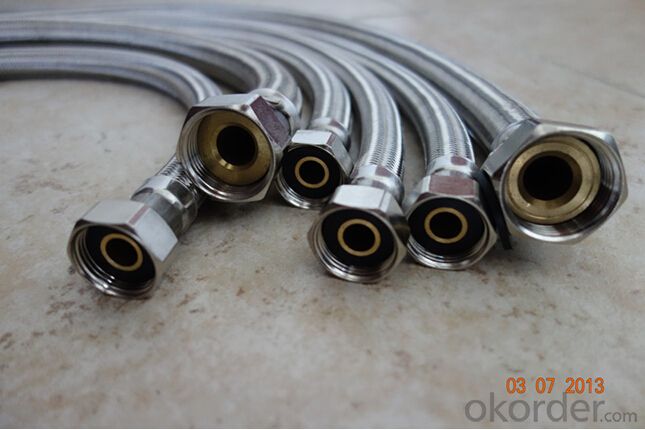
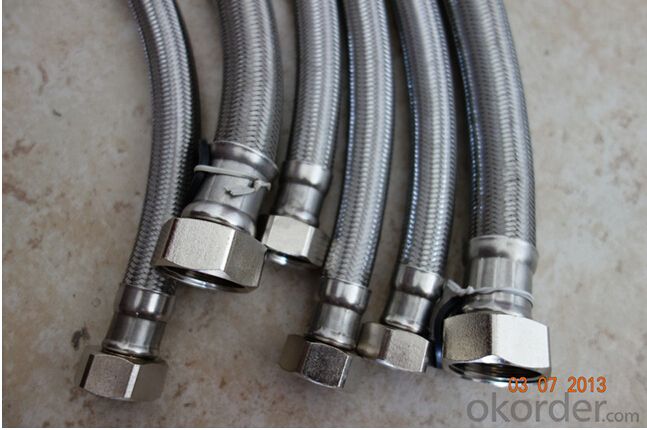
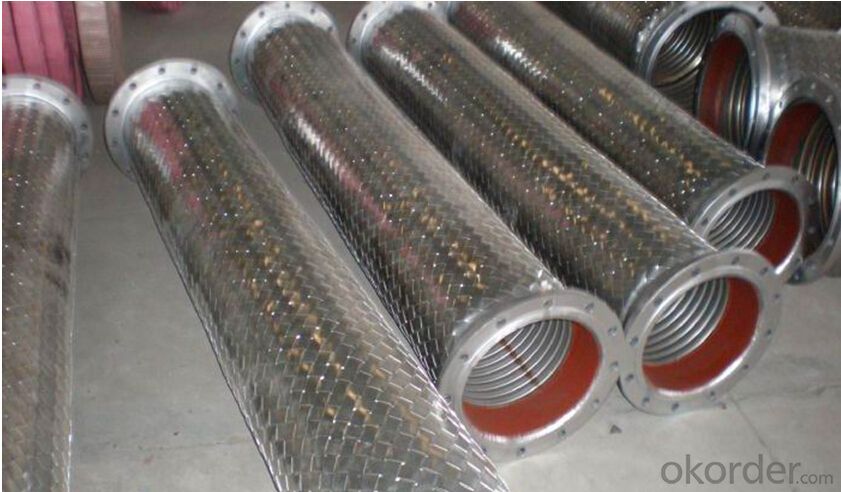
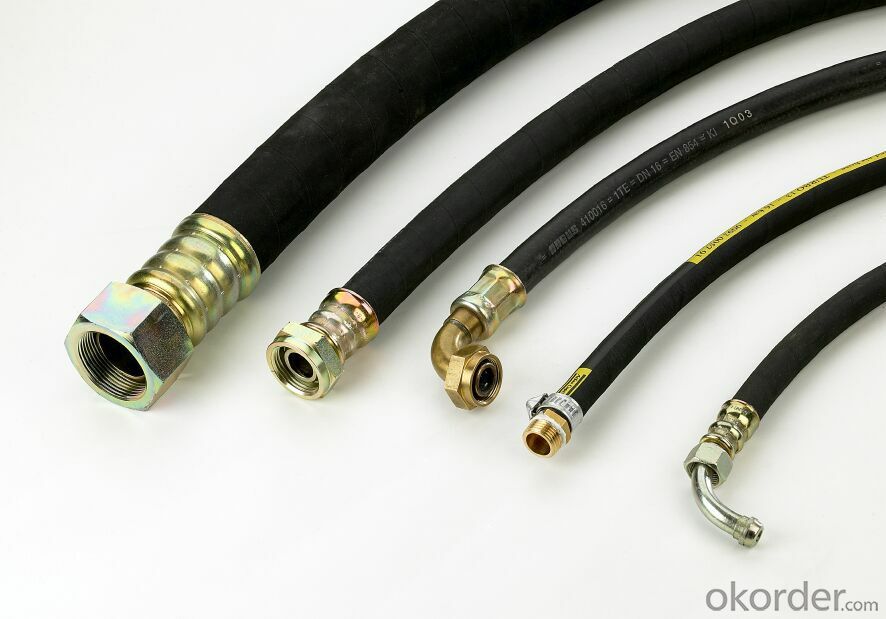
Package of Stainless Steel Braid Hose with 1/3'' Fittings:
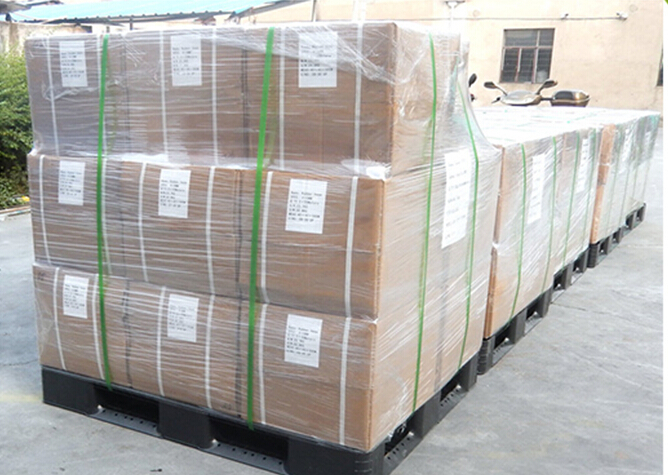
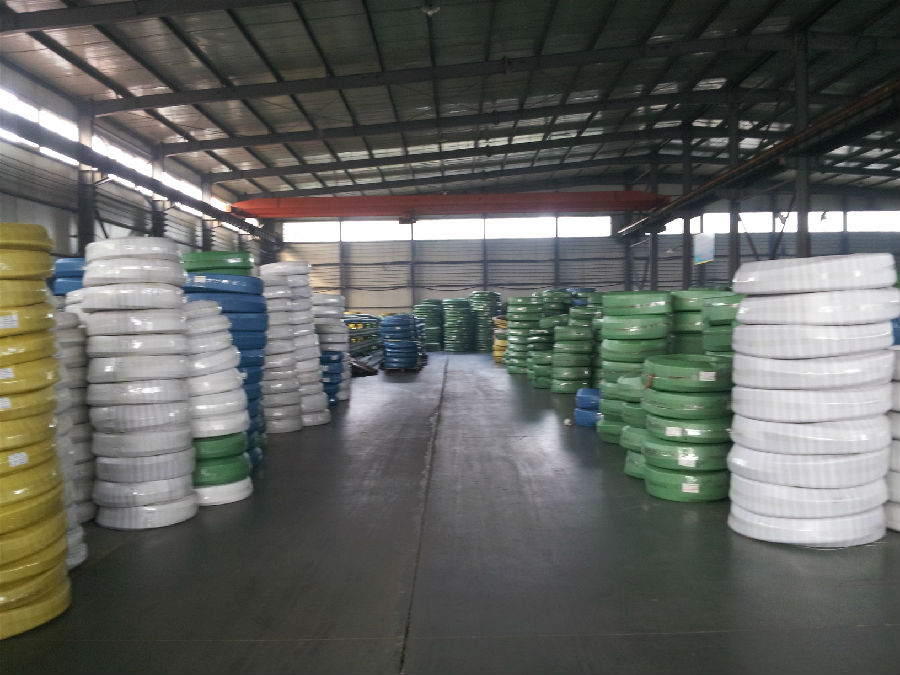
FAQ of Stainless Steel Braid Hose with 1/3'' Fittings:
Who we are:
Answer: We CNBM is a Chinese state-owned enterprise ranked 267th among the Global Fortune 500, as the largest building materials company,we have over 300 affiliated companies,and so many production lines and branch office distribute in China.
2. About our quality:
Answer: Every product needs to be quality proved before shipping.
3. About our service:
Answer: We could gurantte that we can reply you in 2 working hours.
- Q: What are the factors to consider when selecting stainless steel pipes?
- When selecting stainless steel pipes, it is important to consider factors such as the grade of stainless steel, corrosion resistance, temperature and pressure requirements, size and dimension of the pipes, and their intended application. Additionally, factors like cost, availability, and the reputation of the supplier should also be taken into account.
- Q: What is the difference between annealed and tempered stainless steel pipes?
- Annealed and tempered stainless steel pipes are both heat-treated to enhance their properties, but they differ in terms of their mechanical characteristics and applications. Annealed stainless steel pipes are soft and ductile due to the annealing process, which involves heating the material to a high temperature and then slowly cooling it. This process relieves internal stresses and increases the steel's flexibility, making it easier to bend and form. Annealed pipes have lower hardness and strength but are more resistant to corrosion. On the other hand, tempered stainless steel pipes undergo a different heat treatment process called tempering. After being quenched, the steel is reheated to a specific temperature and then cooled rapidly. This process improves the steel's strength, hardness, and toughness, making it more suitable for applications that require high mechanical properties. Tempered pipes have higher hardness and strength but may be slightly less resistant to corrosion compared to annealed pipes. The choice between annealed and tempered stainless steel pipes depends on the specific application. Annealed pipes are commonly used in industries that require excellent corrosion resistance and flexibility, such as food processing, pharmaceutical, and chemical industries. Tempered pipes, on the other hand, are preferred in applications that require higher strength and durability, such as construction, automotive, and aerospace industries. In summary, annealed stainless steel pipes are softer and more flexible with better corrosion resistance, while tempered stainless steel pipes are stronger and harder with slightly reduced corrosion resistance. The selection of the appropriate type depends on the mechanical requirements and the environment in which the pipes will be used.
- Q: Are stainless steel pipes suitable for gas distribution systems?
- Yes, stainless steel pipes are suitable for gas distribution systems. Stainless steel is known for its high corrosion resistance and strength, making it an ideal material for transporting gas safely and efficiently. It can withstand high pressures and temperatures, ensuring the integrity of the gas distribution system. Additionally, stainless steel pipes have excellent durability and longevity, reducing the need for frequent replacements and maintenance.
- Q: How do stainless steel pipes compare to galvanized steel pipes?
- Stainless steel pipes have a higher resistance to corrosion, making them more durable and suitable for various applications. On the other hand, galvanized steel pipes are coated with zinc to prevent rust, but they are prone to corrosion over time. Additionally, stainless steel pipes are generally more expensive than galvanized steel pipes but offer superior longevity and better overall performance.
- Q: How do stainless steel pipes compare to other materials like copper or PVC?
- Stainless steel pipes possess numerous advantages when compared to other materials such as copper or PVC. To begin with, stainless steel exhibits exceptional resistance to both corrosion and rust, rendering it suitable for a variety of applications, especially in environments characterized by high moisture or chemical exposure. Conversely, copper pipes are prone to corrosion over time and may necessitate additional protective coatings or treatments. Moreover, stainless steel pipes boast remarkable strength and durability, enabling them to withstand high pressure and temperature conditions. PVC pipes, despite being lightweight and easy to install, do not possess the same level of strength as stainless steel and may crack or deform under extreme circumstances. An additional benefit of stainless steel pipes lies in their ability to accommodate a wide variety of fluids, including corrosive substances and high-temperature liquids. Conversely, PVC pipes have limited compatibility and may not be suitable for certain applications that demand resistance to chemicals or extreme temperatures. Furthermore, stainless steel pipes offer superior fire resistance in comparison to PVC pipes, which are highly flammable and emit toxic fumes when exposed to fire. Consequently, stainless steel pipes serve as a safer alternative, particularly in buildings or industries where fire safety is of utmost importance. Lastly, stainless steel pipes possess a longer lifespan when compared to copper or PVC pipes. While copper pipes may develop leaks or pinholes over time, and PVC pipes may become brittle and crack, stainless steel pipes are engineered to endure for decades with minimal maintenance. In conclusion, stainless steel pipes represent a dependable and durable choice for an array of applications due to their corrosion resistance, strength, versatility, fire resistance, and prolonged lifespan. They outperform copper and PVC pipes in terms of durability, compatibility, safety, and overall performance, thus establishing themselves as an excellent option for numerous industries and applications.
- Q: What is the maximum temperature stainless steel pipes can withstand?
- The specific grade of stainless steel used determines the maximum temperature that stainless steel pipes can tolerate. Typically, these pipes can withstand high temperatures between 1200°C and 1400°C (2200°F to 2550°F). However, it's essential to consider that the actual maximum temperature may differ due to factors like the stainless steel composition, the duration of exposure to high temperatures, and the presence of corrosive elements in the surroundings. To obtain precise temperature limits for a specific grade of stainless steel pipe, it is always advised to refer to the manufacturer's specifications or seek guidance from a professional engineer.
- Q: Is stainless steel flexible enough for plumbing applications?
- Indeed, stainless steel proves itself to be sufficiently flexible for plumbing purposes. Renowned for their robustness and sturdiness, stainless steel pipes and fittings also possess a certain level of adaptability. This adaptability facilitates effortless installation in a wide range of plumbing systems, even those with intricate designs or confined spaces. Stainless steel pipes can be manipulated and molded without compromising their structural integrity, rendering them suitable for both residential and commercial plumbing ventures. Furthermore, stainless steel exhibits remarkable resistance to corrosion, a vital quality in plumbing scenarios where exposure to water and other corrosive substances is common. Overall, the combination of strength, durability, and flexibility that stainless steel offers makes it an excellent option for plumbing applications.
- Q: How do you calculate the maximum allowable span for stainless steel pipes?
- The maximum allowable span for stainless steel pipes can be calculated by considering various factors such as the material's tensile strength, the pipe's diameter, wall thickness, and the type of support or loading conditions. By using engineering formulas and standards specific to stainless steel pipes, such as those provided by ASME B31.1 or ASME B31.3, one can determine the maximum span that ensures structural integrity and safety.
- Q: Can stainless steel pipes be used for offshore oil rigs?
- Yes, stainless steel pipes can be used for offshore oil rigs. Stainless steel is a highly durable and corrosion-resistant material, making it suitable for offshore environments that are exposed to harsh conditions such as saltwater and extreme temperatures. The corrosion resistance of stainless steel ensures the longevity and integrity of the pipes, reducing the risk of leaks or failures in the oil rig's infrastructure. Additionally, stainless steel pipes have excellent mechanical properties, which allow them to withstand high pressures and maintain structural integrity, making them a reliable choice for offshore oil rigs.
- Q: What is the difference between Type 304H and Type 316H stainless steel pipes?
- Both Type 304H and Type 316H stainless steel pipes are high carbon versions of their respective stainless steel grades, but they have some distinct differences. To begin with, Type 304H stainless steel pipe is classified as an austenitic stainless steel with 18-20% chromium and 8-10.5% nickel. It boasts a maximum carbon content of 0.04-0.10%, which contributes to its improved strength at high temperatures and resistance against sensitization. Sensitization occurs when stainless steel is exposed to elevated temperatures, leading to corrosion along the grain boundaries. Consequently, Type 304H is a suitable choice for applications in the chemical processing industry that involve high temperatures. On the contrary, Type 316H stainless steel pipe is also an austenitic stainless steel but contains higher concentrations of chromium (16-18%), nickel (10-14%), and molybdenum (2-3%). The inclusion of molybdenum significantly enhances the corrosion resistance of Type 316H, particularly in chloride-rich environments. Thus, Type 316H is well-suited for applications that demand exceptional resistance to corrosion, such as marine environments or exposure to acidic or alkaline solutions. To summarize, the primary distinction between Type 304H and Type 316H stainless steel pipes lies in their chemical compositions and the resulting properties. Type 304H offers improved strength at high temperatures and resistance against sensitization, whereas Type 316H provides superior corrosion resistance, particularly in chloride-rich environments. The selection between the two depends on specific application requirements, including temperature, corrosion resistance, and environmental conditions.
Send your message to us
Stainless Steel Braid Hose with 1/3'' Fittings
- Loading Port:
- Tianjin
- Payment Terms:
- TT OR LC
- Min Order Qty:
- 1000 pc
- Supply Capability:
- 100000 pc/month
OKorder Service Pledge
OKorder Financial Service
Similar products
Hot products
Hot Searches
Related keywords
